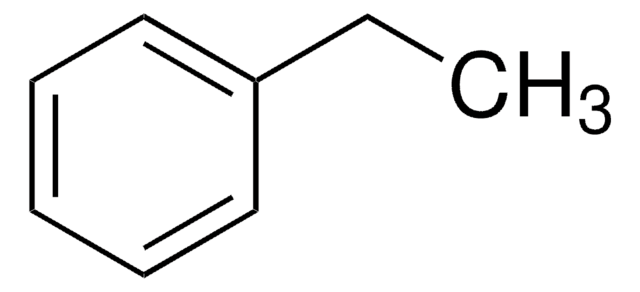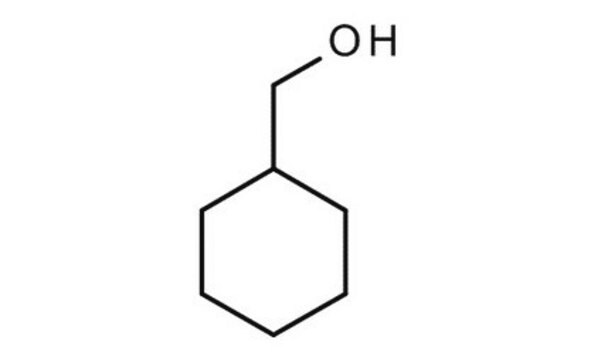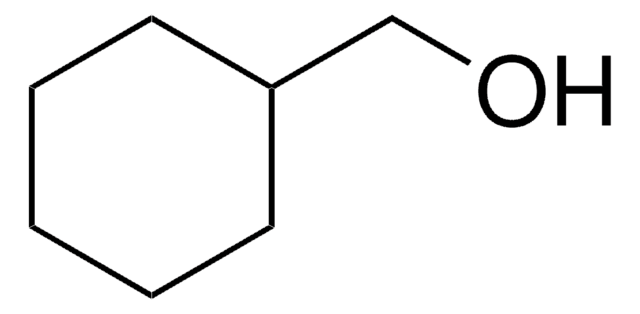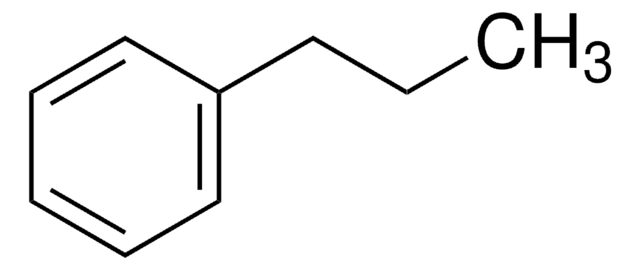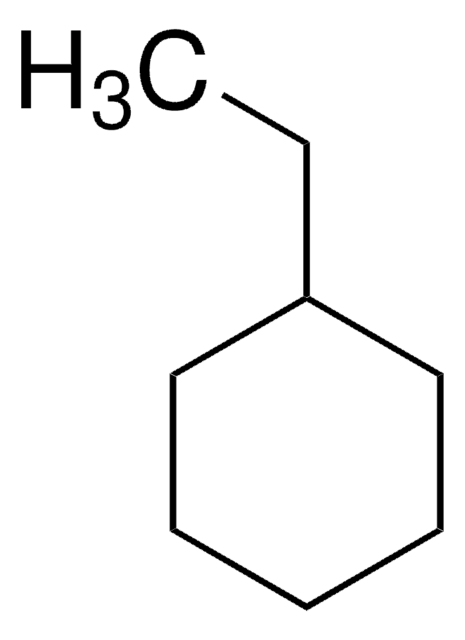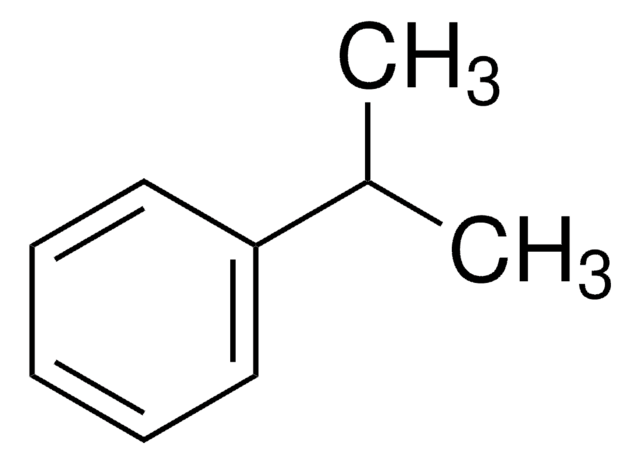모든 사진(2)
About This Item
Linear Formula:
C6H5C2H5
CAS Number:
Molecular Weight:
106.17
Beilstein:
1901871
EC Number:
MDL number:
UNSPSC 코드:
12352002
eCl@ss:
39011201
PubChem Substance ID:
NACRES:
NA.21
bp:
136 °C (lit.)
vapor pressure:
10 mmHg ( 20 °C)
19 mmHg ( 37.7 °C)
19 mmHg ( 37.7 °C)
추천 제품
vapor density
3.7 (vs air)
Quality Level
vapor pressure
10 mmHg ( 20 °C)
19 mmHg ( 37.7 °C)
제품 라인
ReagentPlus®
분석
99%
양식
liquid
autoignition temp.
810 °F
expl. lim.
6.7 %
dilution
(for general lab use)
refractive index
n20/D 1.495 (lit.)
bp
136 °C (lit.)
mp
−95 °C (lit.)
density
0.867 g/mL at 25 °C (lit.)
SMILES string
CCc1ccccc1
InChI
1S/C8H10/c1-2-8-6-4-3-5-7-8/h3-7H,2H2,1H3
InChI key
YNQLUTRBYVCPMQ-UHFFFAOYSA-N
유사한 제품을 찾으십니까? 방문 제품 비교 안내
일반 설명
Ethylbenzeneis a clear liquid with a noticeable aromatic fragrance. It is flammable and easily blends with alcohol and ether, although it has a low solubility in water. It is commonly used as a solvent and vital in the production of styrene and synthetic polymers, which are employed in the manufacturing of plastics and rubber items.
애플리케이션
Ethylbenzenecan be used as a solvent to synthesis Pseudo-Peptides or N,N-disubstituted thiomalonamides with retro thioamide bond.
법적 정보
ReagentPlus is a registered trademark of Merck KGaA, Darmstadt, Germany
신호어
Danger
유해 및 위험 성명서
Hazard Classifications
Acute Tox. 4 Inhalation - Aquatic Chronic 3 - Asp. Tox. 1 - Flam. Liq. 2 - STOT RE 2
표적 기관
hearing organs
Storage Class Code
3 - Flammable liquids
WGK
WGK 1
Flash Point (°F)
71.6 °F - closed cup
Flash Point (°C)
22.0 °C - closed cup
이미 열람한 고객
Enza Palma et al.
New biotechnology, 53, 41-48 (2019-07-01)
Microbial electrochemical technologies (MET) are increasingly being considered for in situ remediation of contaminated groundwater. However, their application potential for the simultaneous treatment of complex mixtures of organic and inorganic contaminants, has been only marginally explored. Here we have analyzed
W Tang et al.
Toxicology, 144(1-3), 39-50 (2000-04-27)
In the present studies, human exposure to styrene and to ethylbenzene (EB) is assessed on the basis of literature data. Total styrene and total EB exposure result from inhalation and from food intake. Styrene and EB inhaled represent the greatest
Leigh Henderson et al.
Mutation research, 635(2-3), 81-89 (2007-05-08)
Ethylbenzene is an important industrial chemical that has recently been classified as a possible human carcinogen (IARC class 2B). It induces tumours in rats and mice, but neither the relevance of these tumours to humans nor their mechanism of induction
Carla G A da Silva et al.
Journal of chromatography. A, 1260, 81-87 (2012-09-12)
Endcapped stationary phases were prepared after thermal immobilization of poly(methyloctadecylsiloxane) (PMODS) onto zirconized and titanized silica supports. These new stationary phases have lower densities of residual hydroxyl groups, according to infrared spectroscopy and 29Si CP-MAS NMR and as shown by
Jie Ma et al.
Current opinion in biotechnology, 24(3), 457-466 (2012-09-29)
Fuel releases that impact groundwater are a common occurrence, and the growing use of ethanol as a transportation biofuel is increasing the likelihood of encountering ethanol in such releases. Microorganisms play a critical role in the fate of ethanol-blended fuel
자사의 과학자팀은 생명 과학, 재료 과학, 화학 합성, 크로마토그래피, 분석 및 기타 많은 영역을 포함한 모든 과학 분야에 경험이 있습니다..
고객지원팀으로 연락바랍니다.